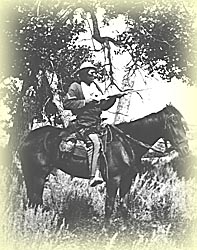|
The Nuptadi/Nueta, Hidatsa and Sahnish tribes of the Fort Berthold Reservation lived in permanent earth lodge villages along the Missouri River for centuries. They developed a strong economy based on hunting and agriculture, and had large fields of corn, beans, squash and sunflowers on the river's floodplain. Such an economy gave them greater material wealth than the nomadic tribes of the Plains had. There were three major trading centres west of the Mississippi, two of which were the Nuptadi/Nueta and Hidatsa communities in the Heart River and Knife River areas, and the Sahnish community near the Grand River, in what is now South Dakota. Nomadic tribes from the Northern Plains came to trade for agricultural produce and furs. The Nuptadi/Nueta (Mandan) had lived along the Missouri River, in the Heart River area, since A.D. 900. After a devastating small pox epidemic in the late 1700s, they moved close to where the Hidatsa were. The Hidatsa came from the Devil's Lake area and settled near the Knife River, where they learned agriculture from the Nuptadi/Nueta. The Sahnish were part of the Pawnee tribe, from whom they separated. They moved north along the Missouri River, and in 1862 joined the Nuptadi/Nueta and Hidatsa at Like-a-Fishhook village. The 1866 agreement concluded at Fort Berthold between the U.S. government and the three tribes provided for "the purchase of stock, animals, agricultural implements . . ." Thus began the development of the cattlemen of Fort Berthold. At the end of the buffalo/horse culture period, the Nuptadi/Nueta, Hidatsa and Sahnish developed one of the most successful cattle/horse cultures ever to exist in the history of Northern Plains tribes. This is their story. On May 1, 1868, two years after the agreement at Fort Berthold, ten Sahnish men enlisted as scouts for the U.S. Army. Each scout was expected to supply his own horse, for which he received a subsistence allowance of 40 cents a day. Among this first group of scouts was Bloody Knife, who was killed at the Battle of Little Bighorn on June 25, 1876. In 1887, the federal government encouraged families to settle in communities along the Missouri River, on land it had allotted. These communities were Elbowoods, Nishu, Beaver Creek, Red Butte, Charging Eagle, Independence, Shell Creek, and Lucky Mound. Page 1 | Page 2 | Page 3 | Page 4 | Page 5 | Page 6 | Page 7 | Page 8 Fort Berthold | Okanagan | Wood Mountain Introduction | Early Ranching | Ranching Life | Contemporary Ranching Life | Community Stories | Transition to Rodeo SACRED BEINGS | RANCHING | ENTERTAINMENT | RODEO | ARTS AND INDUSTRIES |


